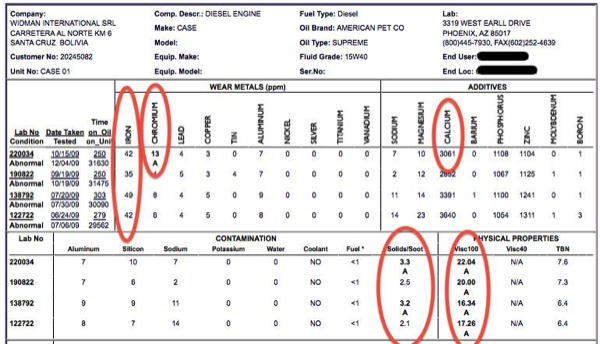The effect of soot in the engine
Soot particles are carbon particles from poorly burned fuel. Soot thickens the oil and sands the cam shaft, cylinders and bearings of the engine. Here we can see the effects of soot over the period of 2000 hours of operation of this loader without paying attention to the black smoke or the oil analysis recommendations.
We can see throughout this period that they did not have any problems with the air filter, although the last one is at the upper limit for dirt contamination.
The serious problem of soot started at (or before) the first sample (bottom line) with 2.1%, raising the 15W-40 oil from about 15 cSt to 17.25 cSt and wearing 42 ppm of iron from the cams and cylinders as well as 6 ppm of chrome, 4 ppm of lead (bearings) and 5 ppm of copper.
The second sample is worse, hitting 3.2% soot, thickening the oil to 16.34 cSt and "sanding" the internal parts.
For the third sample, they cut the oil change to 250 hours, but they already had 2.5% soot and an oil viscosity of 20 cSt (probably from accumulated sludge).
The 4th sample shows 3.3% soot, a viscosity of 22.04 cSt and a lot of wear.
The accumulated wear in this 2000 hour period is equivalent to 6000 to 8000 hours of normal operation. They shortened the life of the loader by 4000 to 6000 hours by not paying attention to the smoke or the oil analysis.


